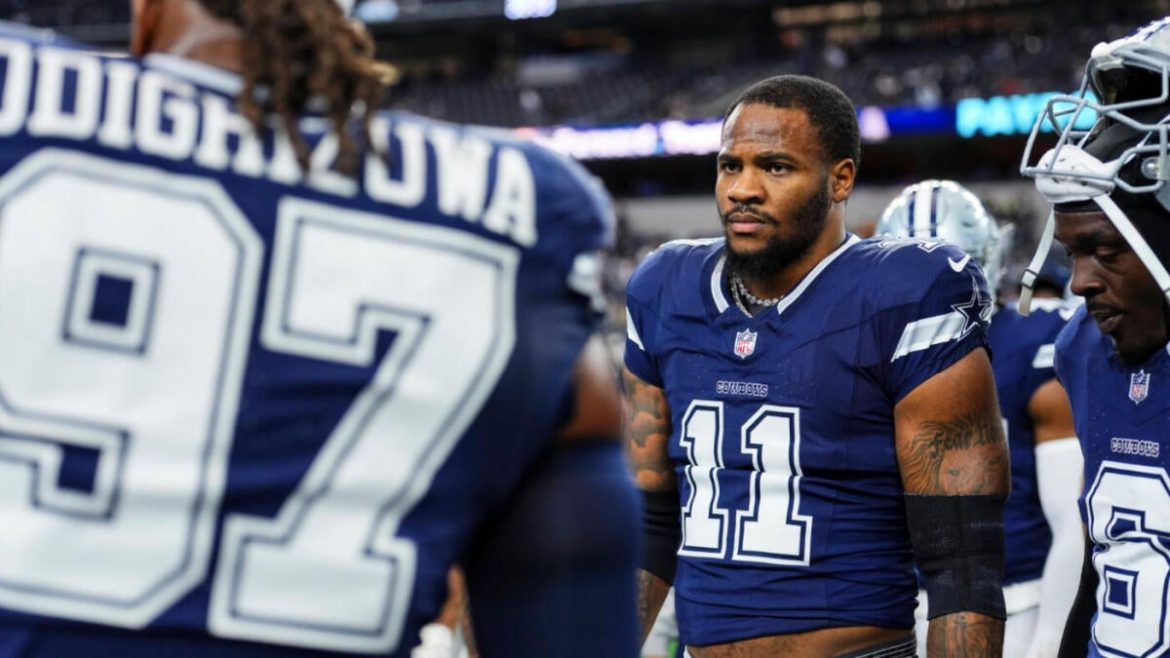Micah Parsons’ Attendance at Cowboys OTAs Amid Contract Dispute: An In-Depth Analysis
The ongoing saga surrounding Dallas Cowboys linebacker Micah Parsons’ attendance at offseason Organized Team Activities (OTAs) has attracted significant attention. Parsons, a three-time All-Pro, is at the center of a contract negotiation that could set an NFL record for a non-quarterback, reportedly targeting a $200 million deal. His presence—or absence—at voluntary OTAs has sparked widespread speculation about his status with the team, his physical readiness, and the potential impact on both individual and team dynamics.
—
The Context: Voluntary OTAs and Contract Dynamics
The Dallas Cowboys began their voluntary offseason training program with OTAs scheduled on multiple dates spanning from mid-May to early June, followed by a mandatory minicamp in June. These sessions serve as a key period for physical conditioning, team bonding, and strategy implementation for the upcoming season.
Micah Parsons, entering the final year of his rookie contract and facing contract extension discussions, initially attended the first day of voluntary OTAs but was noticeably absent on subsequent days, including Tuesday sessions. This pattern has fueled rumors and questions about a potential holdout or dissatisfaction with contract progress.
—
Attendance Pattern: “In and Out” Participation
Parsons’ attendance has been described as “in and out.” While he was present for the opening OTA session, he did not participate the following day, drawing reactions from Cowboys’ head coach Brian Schottenheimer, who emphasized that OTAs are voluntary and expressed understanding about Parsons’ selective participation. Schottenheimer’s remarks reflect an organizational acceptance of Parsons’ approach, indicating that the coaching staff values his presence when possible but respects his decision to manage his attendance amid ongoing negotiations.
—
Reasons Behind Mixed Attendance
Several factors explain Parsons’ mixed OTA attendance pattern:
– Contract Negotiations: Parsons is in active discussions with the Cowboys for a lucrative contract extension, reported to potentially reach $200 million over five years. Such high-stakes negotiations often complicate player interactions with team activities, especially when the player aims to leverage performance, health, and availability in talks. Parsons’ decision to appear selectively suggests a balancing act between fulfilling obligations and signaling leverage.
– Physical Health and Recovery: Parsons himself has cited the need to “heal his body” as a reason for missing certain voluntary sessions. Known for his high-impact playstyle and heavy workload, recovery is crucial to maintain peak performance through the rigorous NFL season. Training independently or taking rest days during voluntary OTAs can be a strategic move to prolong career longevity.
– Training Preferences: Historically, Parsons has sometimes preferred individual workouts over team-organized sessions during the offseason. His “style” includes rigorous personal training programs that may not necessarily align with the structured nature of OTAs, which are more focused on team drills and playbook installation than pure conditioning.
—
Impact on Team and Perception
Despite the contract uncertainty and his inconsistent OTA attendance, Parsons’ commitment to the Cowboys remains public and clear. He has stated intentions to participate in the second week of OTAs and the upcoming minicamp, underscoring a broader plan to be fully prepared for the regular season.
The Cowboys’ front office and coaching staff have publicly dismissed rumors of a potential trade or discord with Parsons, reinforcing his central role in their future plans. Parsons’ proactive attendance on the first OTA day and his openness about his contract talks show professionalism and a desire to maintain positive team dynamics despite external distractions.
However, missing certain OTAs has not gone unnoticed. Some commentators and coaches, including head coach Mike McCarthy, have expressed that Parsons’ absence in some sessions represents a missed opportunity for team cohesion and preparation. Nonetheless, the voluntary nature of OTAs limits the severity of such critiques.
—
Strategic Considerations: Balancing Negotiations and Preparation
The differing approaches players take during contract talks often reflect a strategic calculus:
– Maintaining participation in team activities can demonstrate loyalty, which may foster goodwill in negotiations.
– Conversely, selective attendance can signal seriousness about contract demands, applying subtle pressure without outright holdout.
– Health management, especially for a physically demanding position like linebacker, adds another layer to this balance. Rest and recovery may outweigh the benefits of attending voluntary practices rigidly.
Parsons’ approach appears to integrate these dimensions, attending when possible but prioritizing his body’s readiness and leveraging his out-of-OTA work to sustain conditioning.
—
Conclusion: Navigating Contract Talks with Professionalism and Tactical Awareness
Micah Parsons’ “in and out” attendance at the Dallas Cowboys’ voluntary OTAs encapsulates the complex interplay of contract negotiations, physical maintenance, and team commitments that top NFL players routinely navigate. While his absence in certain sessions raises eyebrows, the overall narrative underscores a professional athlete managing career longevity and contract value without neglecting his responsibilities to the team.
The Dallas Cowboys’ management and coaching staff have tempered criticism, expressing understanding and appreciation for Parsons’ contributions whenever he is present. This nuanced tolerance appears to support a win-win approach: encouraging Parsons’ participation while allowing him the flexibility needed during a pivotal phase of his career.
As the offseason progresses through voluntary OTAs, minicamps, and into the regular season, close attention will remain on Parsons’ participation level, contract status, and on-field performance. His handling of these variables will likely influence not only his personal legacy and financial reward but also the Cowboys’ defensive prowess in the seasons to come.





